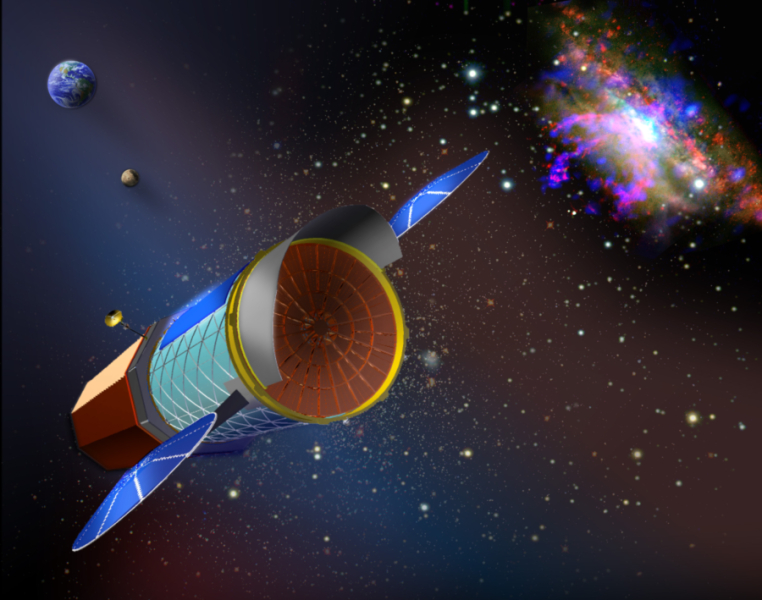
 Credit: NASA
Credit: NASA
IXO
Astronomers use X-ray emission to peer through dust and gas to reveal the powerful flares produced by young stars, to study hot gas close to neutron stars, and to reveal the supermassive black holes which lurk within the centers of many young galaxies. Over the last decade increases in X-ray telescope technology has helped achieve extremely sharp X-ray images provided by the Chandra X-ray Observatory and very sensitive studies of faint objects using the XMM-Newton X-ray Observatory, among other breakthroughs. The next leap forward will occur with the launch of the International X-ray Observatory, or IXO. IXO, shown in the artist interpretation above, is designed to provide the capability to observe, for the first time, supermassive black holes at the earliest times in the history of the Universe and to study other high energy phenomena in unprecedented detail. IXO's images and spectra, obtained using a giant X-ray mirror, will uncover the history and evolution of visible and dark matter and energy and show how they interact during the formation of the cosmic web. IXO will also allow detailed studies of the centimeter thick atmospheres of neutron stars to show how matter reacts under the unimaginable pressures of strong gravity. IXO studies of spinning black holes will reveal how these objects form and grow and may point to the presence of "naked singularities". Detailed measurements of X-ray spectra will show astronomers when and how elements were created and how they were dispersed into the intergalactic medium to allow formation of planets like earth. Development of IXO, a joint effort of NASA, ESA, and JAXA, was recently highly recommended by the Astro2010: The Astronomy and Astrophysics Decadal Survey conducted for the National Academies of Science. Launch is planned for 2021.
Published: September 13, 2010
<
HEA Dictionary ● Archive
● Search HEAPOW
● Other Languages
● HEAPOW on Facebook
● Download all Images
● Education ● HEAD
>

Each week the HEASARC
brings you new, exciting and beautiful images from X-ray and Gamma ray
astronomy. Check back each week and be sure to check out the HEAPOW archive!
Page Author: Dr. Michael F. Corcoran
Last modified Tuesday, 27-Feb-2024 10:13:27 EST


